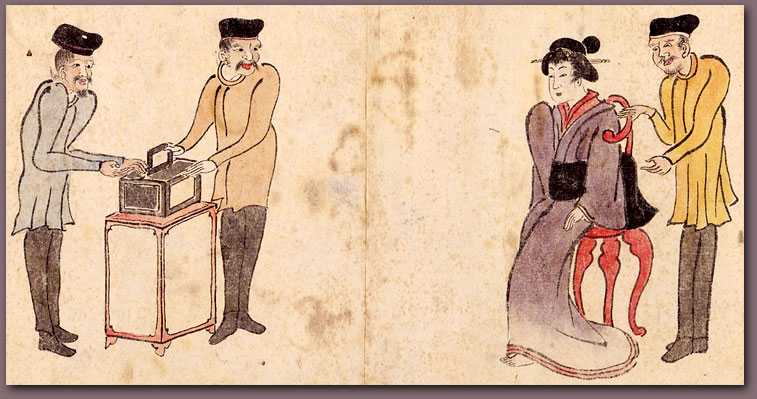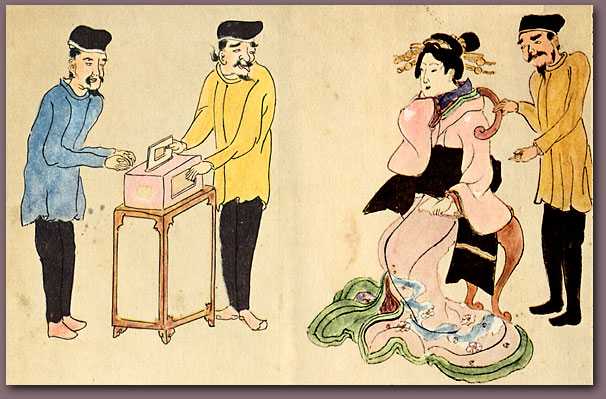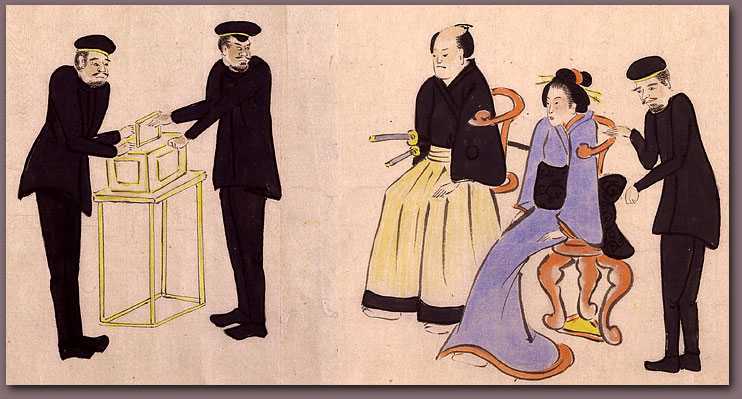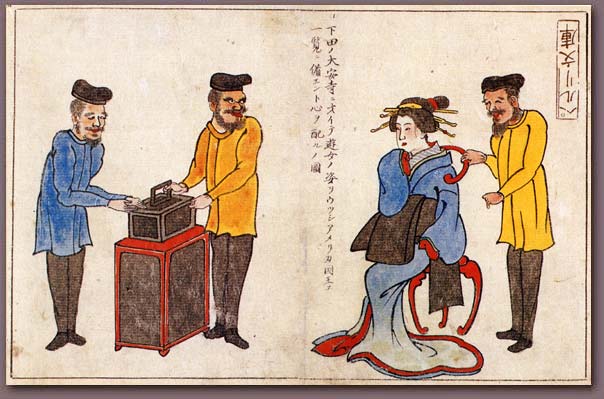



| |
|

| |
||||||||||||||

|

|
 
|
|
|||||||||||
|
||||||||||||||
|

|
|||||||||||||
| |
|
|
|
|
|
|
|
|
|
|
|
|
|
|
 |
||
| The “Black
Ship Scroll,” painted in 1854, featured witty renderings of
crewmen and ordinary Japanese engaged in everyday activities. At least five versions of the scroll are known to exist. Anonymous artists introduced subtle differences in the dress and demeanor of participants in the scenes depicted. In this rendering of a photography session, the individual being |
photographed
is usually a courtesan. (The protruding tongues of the Americans suggest
they were not immune to her charms.) In one variation, however, the sitters have become a samurai and, presumedly, his wife. Samurai always wore their swords on the left side. Since the daguerreotype produced a mirror image, the samurai has placed his swords on his right, in order to produce a proper image. |
|
| Photographing a Courtesan, detail from the 1854 “Black Ship Scroll,”
variant versions held by Honolulu Academy of Art, Japan Society of Northern
California, and Ryosenji Treasure Museum
On viewing images from the historical record: click here. Black Ships & Samurai © 2008 Massachusetts Institute of Technology A project of professors John W. Dower & Shigeru Miyagawa Design and production by Ellen Sebring, Scott Shunk, and Andrew Burstein |